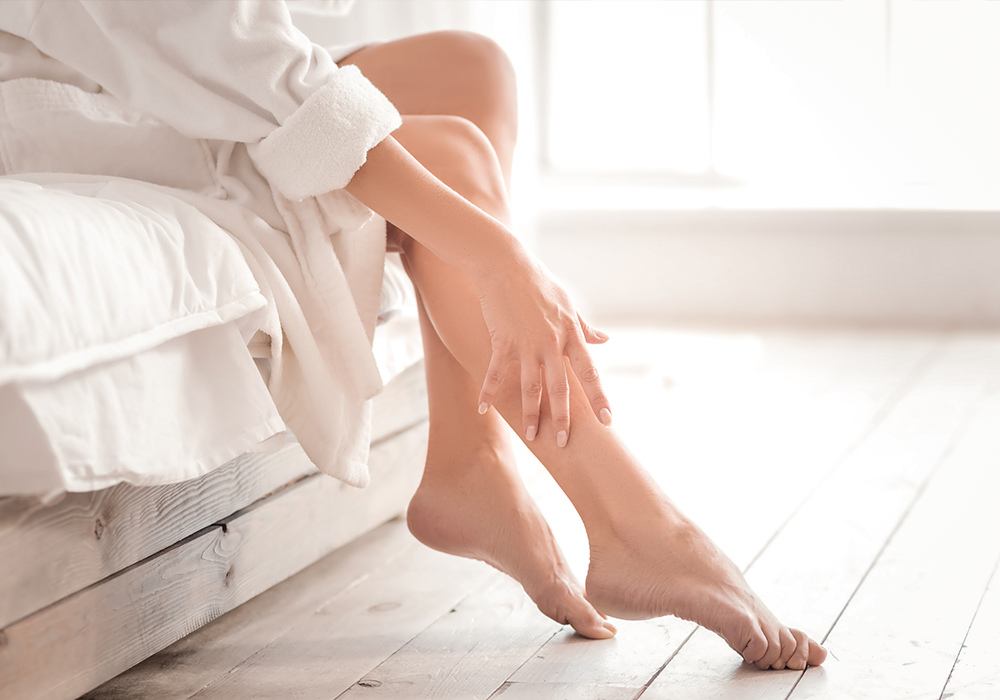
What Are Those Dark, Open Pores? Here’s How To Get Rid of Strawberry Legs for Good
A quick Google search of “strawberry legs”—dark-looking pores or dots that appear post-shaving or self-tanning—is all you need to find page after page filled with forums and threads dedicated to this issue that’s been a cause for concern (and frustration) for women across the globe for years. But no matter how many pages we click or articles we read, the same question remains: “How do I get rid of it?!” To get to the bottom of this spotty issue, we reached out to top dermatologists for some answers.
Folliculitis
“There are a few things that could be causing this,” Santa Monica, CA dermatologist Karyn Grossman, MD, explains, adding that something called folliculitis could be a culprit after having shaved or waxed the legs. “With folliculitis, the hair has a hard time coming through the surface of the skin and it causes little bumps on a temporary basis.”
New York dermatologist Julie Russak, MD agrees, explaining that there are two main types of “strawberry legs.” “Folliculitis is common on the back of the legs and can be causes by tight clothes and friction,” says the doctor. “Friction causes inflammation, and when combined with bacteria in pores, inflammatory red bumps are created.”
Another possibility could be a medical term known as open comedones, which means that the pore is wide open and filled with excess skin debris, oil and bacteria that leave your pores looking darker than they should, says Dr. Grossman. Using a dull razor that pulls at the hair without completely removing the follicle can also cause this, as the follicle can open and become clogged and blocked with oil and dead skin cells.
To treat folliculitis, Dr. Russak suggests in-office chemical peels to exfoliate dead skin, unclog pores, kill bacteria in pores and lighten pigmentation on the affected areas.
Keratosis Pilaris
Dr. Russak says the second type of “strawberry legs” is actually keratosis pilaris, or KP. “Keratosis pilaris is a genetic condition where keratotic plugs are present around hair follicles,” she explains. “Keratin forms a scaly plug that blocks the opening of the hair follicle, and the plugs create patches of rough, bumpy skin.”
To treat KP, Dr. Russak suggests using Glytone’s KP Kit ($69), “which is a cleanser and moisturizer combination and contains glycolic acid that exfoliates dead surface skin and smooths rough bumps,” she says. Another solid option, says the derm: Eucerin Roughness Relief Cream ($11), which contains urea to exfoliate and unclog pores.
Post-Tan Trouble
If your spots and enlarged pores tend to creep up post-tan, Dr. Grossman says that this is because tanning creams work by staining the upper layers of the skin. “If someone has a thickening of the skin, such as on the knees, elbows or palms, the self-tanner will take stronger in this area,” which works to almost showcase your already-open pores.
To reduce the appearance of these dark pores, start regularly exfoliating with natural, mildly abrasive scrubs or tools like the all-natural Dermastone ($20) to get rid of any blockage within the pores, especially before self-tanning. Of course, shaving less frequently or stopping altogether will also help the appearance. If this isn’t an option for you, seek out other hair removal methods that target the root like waxing, lasers or IPL therapy.
Find a Doctor
Find a NewBeauty “Top Beauty Doctor” Near you